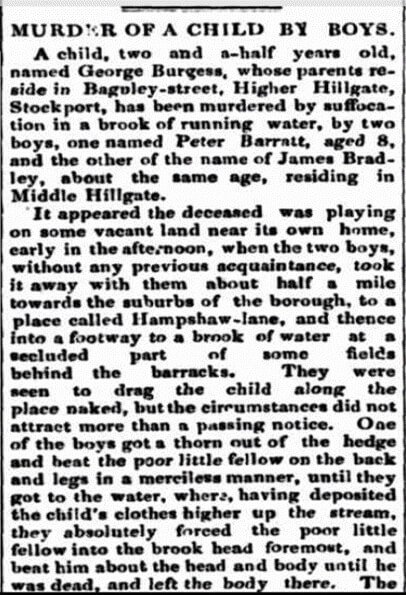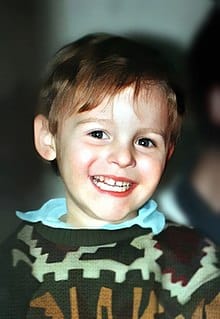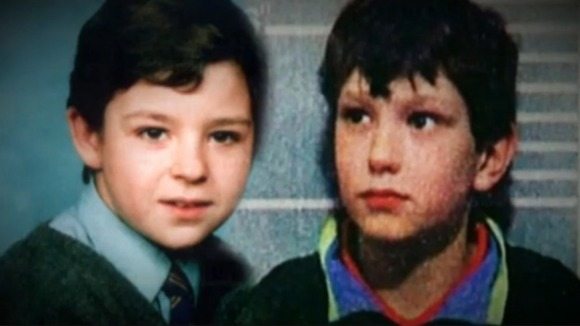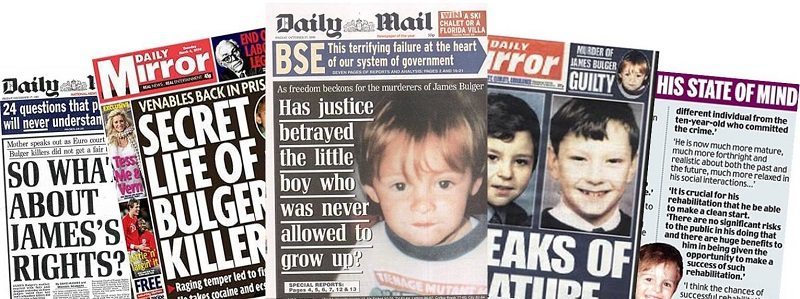As a society and a legal system, dealing with adults who commit serious and violent crimes is still debated and when this extends to children, the best approach and how to find a balance between justice, punishment, and rehabilitation becomes even more complicated.
When a terrible crime is committed by a juvenile, by a child, inevitably questions are asked. The case of Daniel Bartlam, a 14-year-old who brutally murdered his mother in their home in 2011 in Nottingham, England, was one which put the criminal justice system under the spotlight, and a case where the media labeled this young boy “devil child”. An earlier case in 1993, saw two young boys, Jon Venables and Robert Thompson become famous names for the wrong reasons. These were two 10-year-old boys who carried out a horrific and sustained attack on 2-year-old James Bulger which led to his death. They were convicted in an adult court for abduction and murder in one of the most terrifying cases of children murdering another child the UK has ever seen.
The Criminal Justice System For Juveniles
The juvenile justice system has been tested on its procedures for youth crime, its policies for releasing the identities of child criminals, and the methods it has used to try and rehabilitate these children. The most appropriate way to deal with children who have committed very serious crimes is not an easy issue.
We can struggle to understand the criminal acts of adults, particularly when murder is involved. When a child commits such an act it unbalances our faith in human nature and makes us question just what has gone wrong. However, throughout history, we have seen cases of children who murder.
In 1861 in Stockport, England there was a case of two 8-year-old boys, Peter Barratt and James Bradley who murdered a 2-year-old boy, George Burgess. In a case very similar to that of James Bulger, these two young boys did not know the child.
They had suffocated the boy after beating him and then left him lying face down in a stream. Seemingly the little boy was left to play with a friend for some time opposite his house while being looked after by neighbors, during which time he disappeared.

The societal norms, bear in mind, in 1861 regarding child safety and risk from strangers were quite different from how they are today. After his body was found and due to the injuries and the fact the small boy was naked it was quickly established his death was not an accident.
Further questions were raised about the care of the young child after old scars and injuries were found on his body. Reports of two older boys being seen with little George quickly came in and Peter Barratt and James Bradley, both aged 8 years old were brought in to be questioned.
How long did you hit ‘it’ with that stick?”
“Until it was dead,” James Bradley said; Barratt was silent.
In a disturbing interview, they described what they had done to 2-year-old George and how they had left him in the river, referring to him as ‘it’. In their initial hearing, both boys were convicted of wilful murder after the jury was convinced the boys were “capable of discerning good from evil” and the child’s death was indeed at their hands.
At their trial, the jury returned a verdict of manslaughter based on an instruction from the judge that if they did not feel the boys knew the consequences of their actions the verdict should be manslaughter. It was clear the judge struggled with the idea of convicting such young boys on a charge of wilful murder.
The boys were sent to jail for one month to be followed by five years at a reform school. In 1861 blame for such acts was placed on the ‘devil‘ and in that way, punishment, help, and support could return the children to ‘good’.
The boys’ families were not blamed and remained within the community. This is in stark contrast to the reaction of society in the James Bulger case and the response and blame directed at the parents of Robert Thompson and Jon Venables.
The Murder of James Bulger
On the 12th of February 1993, Denise Bulger visited her local shopping center in Bootle, Liverpool with her 2-year-old son James. On her way out she went into a butcher’s shop, while her back was turned at the counter, little James disappeared.
Jon Venables and Robert Thompson were both 10 years old in 1993. Instead of going to school that day they decided to go to the shopping center instead. They visited various shops at the Centre, stole some items, and generally hung around the area passing the time.

They saw little James and realized his mother’s back was turned. They led him away by the hand in a matter of seconds and gently led him out of the Centre; a chilling few minutes captured on CCTV. While Denise frantically searched for her son, convinced he must have innocently wandered away from the shop, the boys led James over two miles across Liverpool.
They were seen by numerous people. Some felt concerned by the child’s distress and were told he was their brother or he was lost and they were taking him to the police.
No one could have known the truth of the events that lay ahead. The boys eventually stopped by a train station, adjacent to the local police station, and led James to the railway line.
On 14th February 1993, the body of James Bulger was found on the railway tracks. It was clear his death was not accidental and a horrific catalog of injuries was found confirming to police this little boy had suffered greatly at the hands of his abductors.
The CCTV footage from the shopping center was quickly circulated in an attempt to identify the two boys responsible for the abduction. Jon Venables was identified by a woman who knew both boys and knew they had been truant from school that day. Both boys were arrested and on 20th February 1993, both were charged with the abduction and murder of James Bulger.
Police were shocked at the young age of the boys, not having experienced such a case with children so young in the past. Even seasoned police officers are unlikely to expect children so young could have carried out these acts.
There was no doubt about their involvement in the crime. Forensic evidence was clear in linking paint, blood, and DNA from the boys to James and the crime scene, placing both boys as perpetrators of the abuse that took place.
During their arrest and trial, their names were not released to the public and both boys’ families were moved out of Liverpool by police and now live under new identities, so fierce were the threats against them from the public. The nature of this crime, the brutality against an innocent child shocked and horrified people to the core and they were looking for someone to blame.

The Age of Criminal Responsibility
In 1908 the Children Act set the minimum age of criminal responsibility in England and Wales at 7 years old. This was raised to 10 years old through the 1963 Children and Young Persons Act where it still remains today. In Scotland, the current age of minimum responsibility is 12 years old, raised from 10 years in 2011.
This means that a child under the age of 10/12 years old cannot be charged with committing a criminal act because their age suggests they are unable to fully understand their actions and their consequences. The minimum age of criminal responsibility varies in different countries across the world. Some are set very low such as 7-years-old in Switzerland whereas others are set much higher such as 16-years-old in Spain.
Recent years have seen much debate over whether the current age of criminal responsibility should be raised or lowered within the UK. The Children’s charity Barnardos, for example, is advocating a raise in the age of criminal responsibility for child criminals in England and Wales from 10 to 12 years old for all offenses other than murder, attempted murder, rape, and aggravated sexual assault.

They also highlight concerns of the focus remaining solely on punishing the child and not looking at the wider influences and factors contributing to their behavior such as parenting through a lack of discipline and boundaries given to the child.
The tragic case of 2-year-old James Bulger in 1993 is a case that is raised continuously within the debate of increasing the age of criminal responsibility in England and Wales. This highly publicized case has become a benchmark for highlighting the crimes a young child of 10 years old can commit and how, as a society and a juvenile justice system, we must be equipped to adequately deal with them.
The details of this crime left the nation questioning how two young boys could be capable of such shocking acts toward a child and how our criminal justice system should deal with them. This case left opinions divided and experts scrambling to explain how this could happen. For some, these boys must be evil, rotten to the core, and should never be released from custody. For others, they needed help and were a sign of the dangerous levels of disturbing behavior emerging among young people.
If the age limit had been set higher in England and Wales at the time of this crime, these two boys would not have gone through a criminal trial; instead, they would have been dealt with by the juvenile court system and most likely placed in juvenile detention for rehabilitation without a full conviction for abduction and murder. This, for many, would not have been an appropriate and adequate response for a crime so brutal.
“My happiest memory of him is him running towards me with his hair bouncing everywhere. He didn’t walk anywhere. He’d run into your arms with a big smile on his face.” – Denise Fergus, James Bulger’s mother
For Jon Venables and Robert Thompson, while the facts of the events that day have become clear, the debate surrounding the boy’s conviction and subsequent treatment, their new identities, and their ability to reintegrate back into society are still rife.
The agony of Denise Bulger (now Denise Fergus) who lost her little boy to these two boys continues while she fights to keep them contained and away from the society she fears they will harm again. The parents of the boys themselves have gone through the pain and the scrutiny of it being their children who have carried out the most terrible of acts.
Both Thompson and Venables are now out of custody, and while Thompson appears to have stayed under the radar in his new identity, Venables has once again come to the attention of the police, raising questions about his safety in society and the effectiveness of his years in incarceration.

Children on Trial
Jon Venables and Robert Thompson were tried as adults at Preston Crown Court in November 1993 and they denied all charges against them. It was ruled that both boys were capable of acting with criminal intent and had the maturity to fully understand their actions.
The verdict came on 24 November 1993 when both boys had then turned 11 years old. They were found guilty of abduction and murder and recommended to be held in custody for a minimum term of eight years. The judge lifted anonymity after the trial allowing the boys to be named in the media, however, the locations of the units where they would be held were not to be disclosed to the public.
Many felt for the two boys to be released at 20 years of age after the severity of their crime was not adequate and was not justice for James or his family. The case of James Bulger is one which highlights the differences in response to child criminals and very serious crimes across the world. If this crime had been carried out in the United States, for example, these two boys could have found themselves sentenced to a juvenile life without parole sentence with no possibility of being released from prison.
A dedicated campaign was launched to raise the term of their custody further and in July 1994 their terms were increased to a minimum of 15 years by the then Home Secretary Michael Howard. However, the young age of Jon Venables and Robert Thompson and their ability to understand the adult court proceedings was raised and the decision was overruled with the sentence returned back to eight years.
Young Offenders, Juvenile Justice, and New Identities
Both Jon Venables and Robert Thompson were given new identities during their time in detention. There was and still is a real fear that should their true identities be revealed their lives would be at risk.
Both boys were released in 2001 under lifelong licenses with conditions not to contact each other, the Bulger family, or return to the Merseyside area. Since their release little has been heard of Robert Thompson. It would appear he has successfully maintained his new identity and is now living his life. Jon Venables, however, has repeatedly revealed his true identity and has been returned to prison for periods for violating the conditions of his release. This apparent lack of rehabilitation and continued criminal activity by Jon Venables has served to push the debate for harsher sentencing for child criminals further.
“He was trained by the police in counter-surveillance and has had to live and hold a lie for the rest of his life. There was little doubt that if his identity became compromised his life would be at risk.”
Reports have suggested the current identity of Venables is the fourth new identity provided to him due to his own admissions to new friends he made after the release and subsequent photos of him appearing on social network sites.
The purpose of such new identities is to protect the perpetrator of the crime once they have served their time and to enable them to get on with their lives.
For Jon Venables and Robert Thompson, should people find out who the man who has just joined their workplace, started to drink in their local pub, or joined their social group is, there is a very real risk he will be set upon by members of the public still deeply horrified by the acts carried out on little James Bulger in 1993.
There have been numerous instances of speculation and photographs, revealing the whereabouts of people believed to be either Jon Venables or Robert Thompson. This has included a number of entirely innocent men who have no connection to these individuals or this case being pointed at and picked on as being one of these boys in disguise. This is a dangerous practice and one which has caused innocent men to flee their homes and surroundings for fear of attack.
Trial By Media
The influence of the media in such cases cannot be underestimated. In the case of 14-year-old Daniel Bartlam, the media portrayed a young boy as evil for the murder of his mother, linking his crime to a recent storyline in a popular soap opera where a murder was carried out using the same method. A label that will now stick with this child for the rest of his life.
The media reaction to the James Bulger case can only be described as a media circus from the moment the news of the case broke, through the arrest of Robert Thompson and Jon Venables, and to their trial. Members of the public became enraged at the crime with all attention and hate directly fully at the two boys and their parents.
Angry mobs surrounded the vans taking the boys to court, throwing stones and shouting obscenities. Their parents had to move away from the area due to threats from the public and concerns for their safety. The media stories continued with headlines screaming “Freaks of Nature” (Daily Mirror) and one from the Daily Star “How Do You Feel Now, You Little Bastards?”.

On one side was a call for the harshest treatment and punishment for two boys who were clearly evil and need to be condemned for the rest of their lives and on the other were voices calling for calm and remembrance that these were two children at 10 years old.
Eventually, calm ensured, and while horror at the crime understandably remained, an understanding that both Robert Thompson and Jon Venables were children and for them to have carried out such a brutal attack on a young boy needs to be understood and they needed help. The descriptions of child criminals from the media influence the opinion of the public and this is an area that still needs attention.
The case of James Bulger is an isolated one but it has raised some very important questions regarding the criminal justice system and its approach to child criminals. Such cases understandably horrify and highlight significant points regarding juvenile crime and justice; however, overall there has been a decrease in youth crime in the last 10 years.
Reports from the Prison Reform Trust highlight a 72% decrease in the number of crimes carried out by children since 2005-2006 and a significant drop in the number of children being held in custody. An improvement in these statistics has been attributed to an increase in community-based solutions for children engaging in criminal behaviors such as restorative justice programs and intervention programs designed to prevent child crime and steer children onto a better path.
Children who commit severe crimes are rare however they do happen and history shows us they are not necessarily a new phenomenon. The challenge of the juvenile justice system is how to appropriately deal with such children in a manner that adequately provides punishment for their crime but recognizes they are still children. Intervention and assessment are required to understand their motives and their psychology in order to ensure rehabilitation and support for their return to society.
References
- Barnardo’s. From Playground To Prison: The case for reviewing the age of criminal responsibility. PRU Report
- The Independent,. (1995). A Child Murdered By Children.
- Inbrief.co.uk. (2015). What is the age of criminal responsibility in the UK?
- McGarrigle, N., Graham, M., Kalberg, Å., Watkins, D., Ellis-jones, a., & O’Neill, C. (2015). It’s time to raise the minimum age of criminal responsibility.
- Hill, A. (2013). James Bulger killing: 20 years on. The Guardian.
- Trove.nla.gov.au. (2015). 03 Jul 1861 – Murder of a Child By Boys.
Cite This Article
Guy, F. (2015, Aug 30). Child Criminals and The Juvenile Justice System. Crime Traveller. Retrieved from https://www.crimetraveller.org/2015/08/child-criminals-juvenile-justice/
- I Let Him Go: The Heartbreaking Book from the Mother of James Bulger – “THE SUNDAY TIMES BESTSELLER, reissued for the 30th anniversary of James’ death, with new chapters from Denise. This is a mother’s tale, of finding a way through the despair to remember the happiness and wonderful memories that James brought his family.”




Hi Fiona,
Very interesting piece. 'Though I've never been sure whether Thompson & Venables mindset at the time was; "we were bored, so we thought we'd muck about and play a prank that just sort of got way out of hand" or "we thought it would be fun to grab this little boy take him away from his mum, torture and kill him."
Although there could be elements of both scenarios, and possibly some things I haven't even considered, I've always tended to feel that the former one would be more plausible.
When this tragedy occurred I was reminded of a fictional story I had read some 15-20 years earlier, when I was perhaps only slightly older than these two boys were at the time and, clearly, again when I read your article.
This was a story that was one of a compilation of horror stories in a book that actually belonged to my older brother. All but one of which I don't recall anything about at all. That one story however, although I felt at first it was probably as bad as, if not worse than, the others. I'll give you a brief synopsis.
Two brothers (about 8/9ish) live in the suburbs with their parents, and they decide to go and play in their father's large garden shed where he kept all his gardening/diy tools and workbench. Feeling bored, they decided to invite the girl from next door (who I think was a bit younger) to come over and "play". As soon as she enters the toolshed, one of the boys kills her and they set about carving her up into pieces. The author delights, at this point, to tell us all the gorry details, but I can't say I found this horrifying, just horrible. It wasn't 'til the end of the story, the last few sentences, that I felt like I'd been hit in the face with a block of ice;
" It was five o'clock by the time they had finished and placed all the pieces on the workbench, as if it were a gruesome, macabre jigsaw. 'Quick, there's Dad' said John, hearing the familiar crunch of gravel in the driveway. And with that they both shot off, eager to proudly show their Father the results of their day's labour. "
Yes, I know it's only a fictional story. However, up to that last sentence I had only thought of it (and all the other stories) as just that, the characters were just vehicles in a gruesome plot designed (mostly not very well imo) to excite, scare and "disturb" the reader. Yet here I had been challenged by a hypothesis that maybe (some?) people could do the most terrible thing not really fully comprehending the enormity of it.
So, when I learned the genuinely horrific details of the James Bulger case, naturally I was reminded of the story I had read several years earlier, and again, more recently, with Daniel Bartlam, Will Cornick and the boy in the Vincent Uzomah stabbing case (albeit they were a bit older).
Another point that you rose; Thompson has, seemingly, accepted his new identity and we can only assume that he is able to continue with his life reasonably untroubled, and putting the past behind him. Where as Venables has had extreme difficulties doing likewise. At one point returning to prison for possessing child porn.
You would think by this evidence that Venables was a real bad "egg" and consider the possibility that perhaps Thompson was essentially a good lad that had been "seduced" by Venables "bad boy" image. It would make sense, but then again so would the opposite; highly clever and manipulative Thompson knows to keep his nose clean and not do anything to draw attention to himself. While Venables, led by emotion, is angry that he is forced to live a lie, or maybe just can't cope out in society?
In some ways I can sympathise with this "angry to be forced to live a lie" idea. Being that I find it prudent not to be too transparent, let's say, about my own identity – but, at the same time, feeling a bit hacked off that I should in any way need not to be.
Ah, to be or not to be, that is the question.
Hi JP, thank you for such interesting comments. It is curious how fictional stories can affect people and especially children. The recent 'Slender Man' stabbing case in Wisconsin is a case example where two young girls at 12 years old have seemingly become enthralled by a fictional character to the point where their understanding of his presence has fallen over into reality. To the extent they believed an act of killing another would bring them rewards and acceptance from this character, if the various media reports on the case are accurate. It is that transition from a fictional world to where the thoughts arise of such events being able to happen in real life.
The James Bulger case is one which I have always struggled with. The enormity of these two boys actions and the brutality towards an innocent young child against the fact they were still children and what their true motive, intent and understanding was. Equally I wonder whether as lone individuals would they have carried out this attack and therefore how much influence they had over each other.
Of course, all actions have consequences and the actions of these boys have changed their lives forever. I suppose, part of their taking responsibility for their actions on that day is for them to have to accept the reality of their new identities and all which that brings, although as you say, it does appear Venables is struggling with that and is a very troubled individual.
This is really quite scary. Children should be playing with dolls and climbing trees not committing murder. I wonder what their upbringing was like. Children learn from their parents and copy what they see, this behaviour cannot have come from nowhere.
Hi Valerie, it is a difficult concept for us to understand and accept, that children of today's age are unfortunately committing such serious crimes as murder and the murder of other children. Although saying that there are many historical cases of children committing murder so it not necessarily a new phenomenon of our modern age. Today we have a much wider media presence and of course the internet where news stories of such cases get picked up and circulated around the world very fast. I think this has raised awareness of these cases and highlighted to the general public that they are taking place.
Upbringing is an interesting question and one which many people have asked in these cases. It is certainly an area of focus and of research in order to try and establish the factors which may be involved leading a child to carry out such acts. Hopefully as time progresses we will gain more understanding and, where possible, changes can be made.
I hope at least we can learn something from cases like this. If changes can be made then we need to make them as children should not be killing other children. We as a society need to know how to deal with these children and try to ensure these sorts of crimes don't keep happening.
It always breaks our collective hearts when young children are put into situations that puts them on a crash course with the criminal justice system.
Hi Bobby, it is terribly sad to see such young children, who should be out spending time with friends, finding their identities and growing up, in circumstances where their behaviours have changed their lives forever. I think questions do need to be asked about their upbringing and their own personalities when this happens, if anything to see whether this can be avoided. Once this road is taken there is no going back and childrens lives are sent in a direction I doubt even they ever imagined.